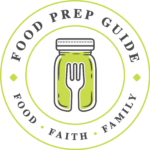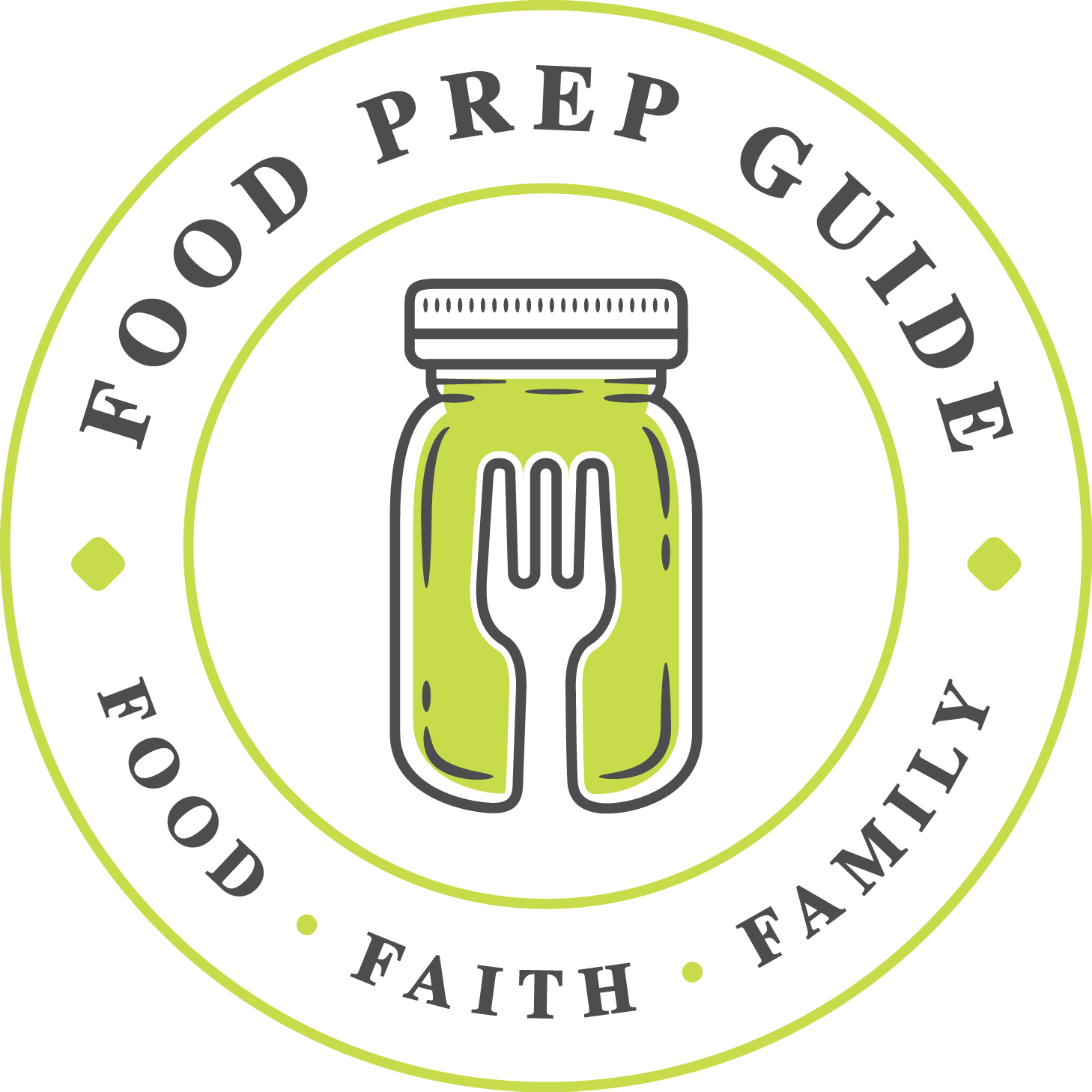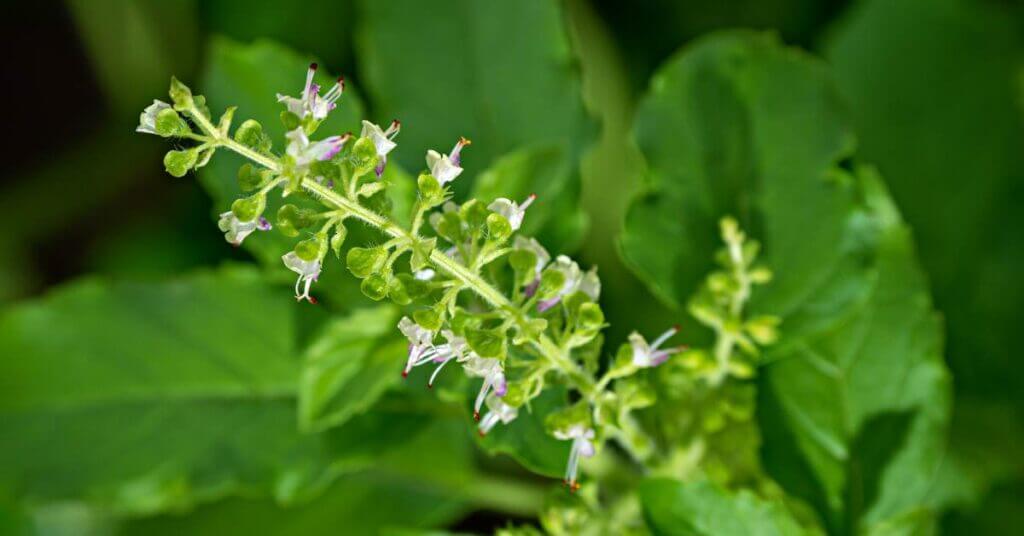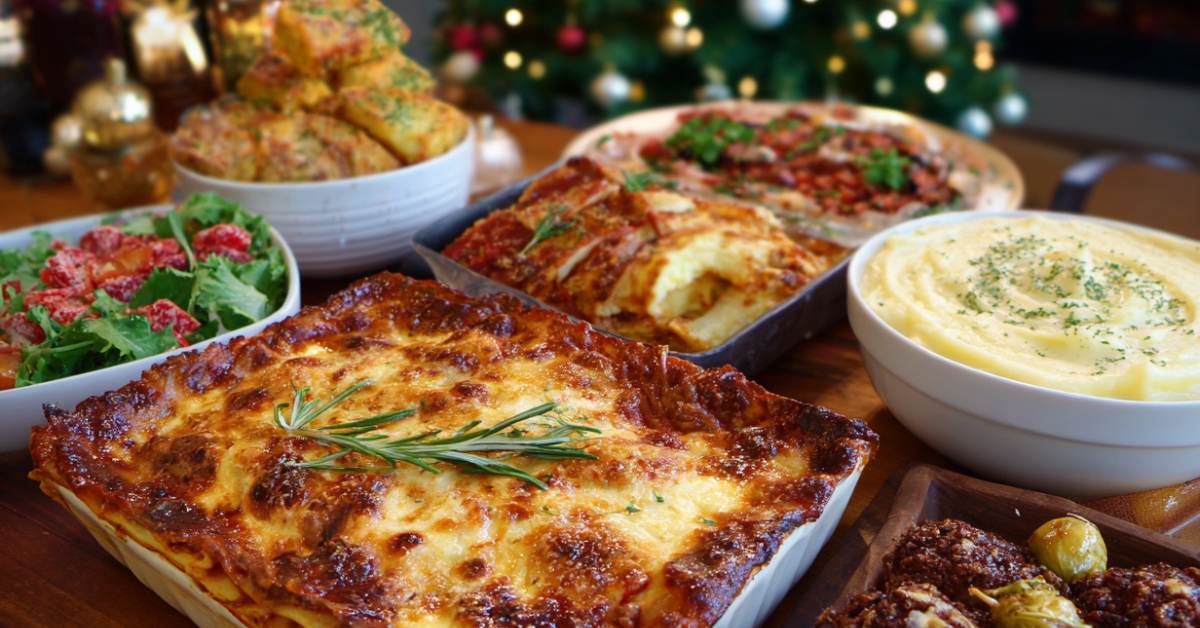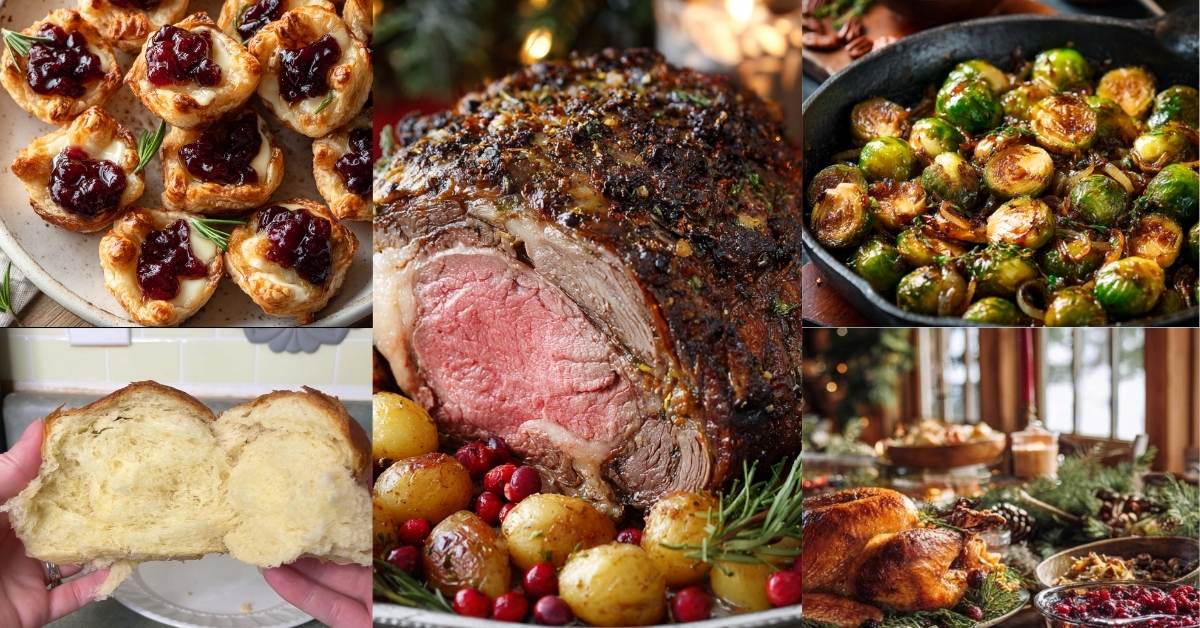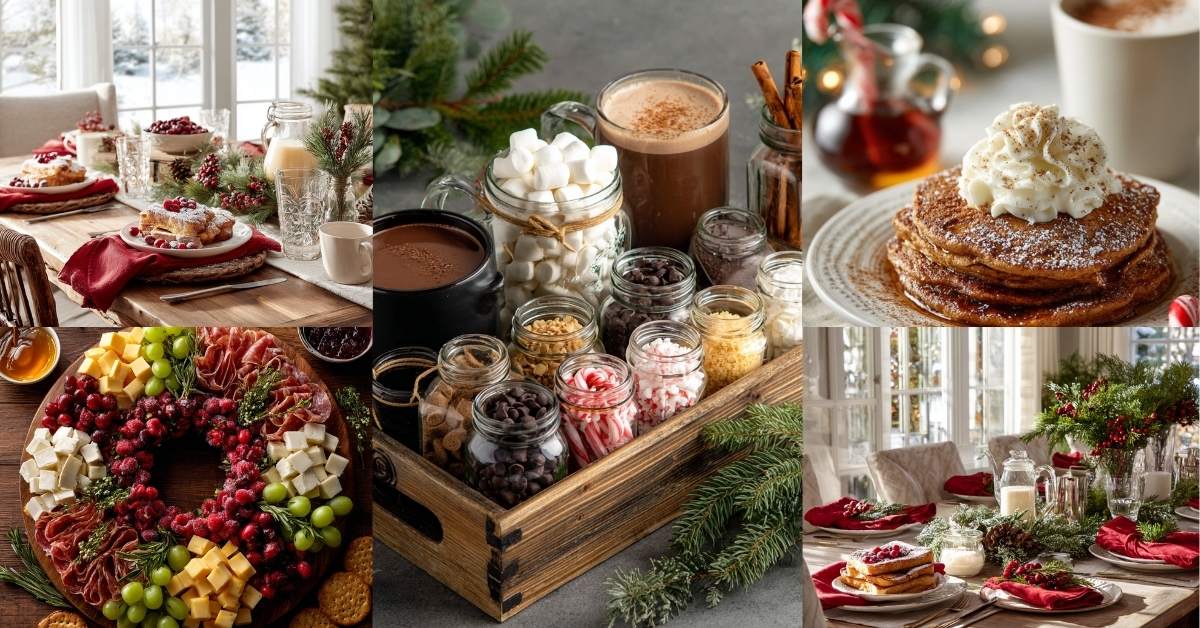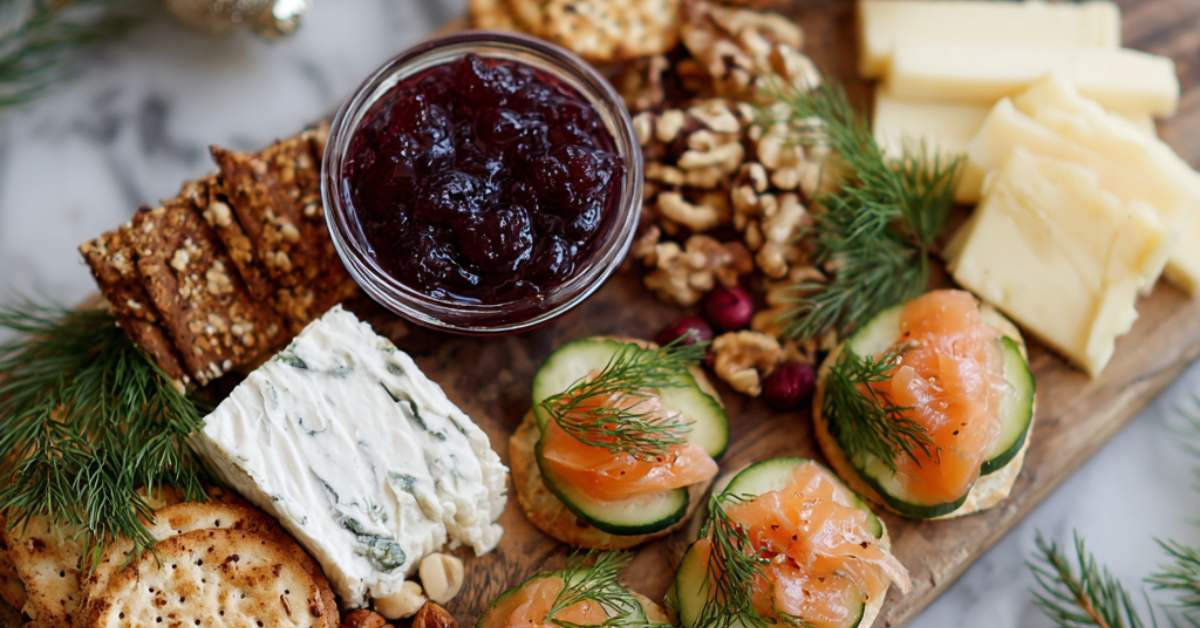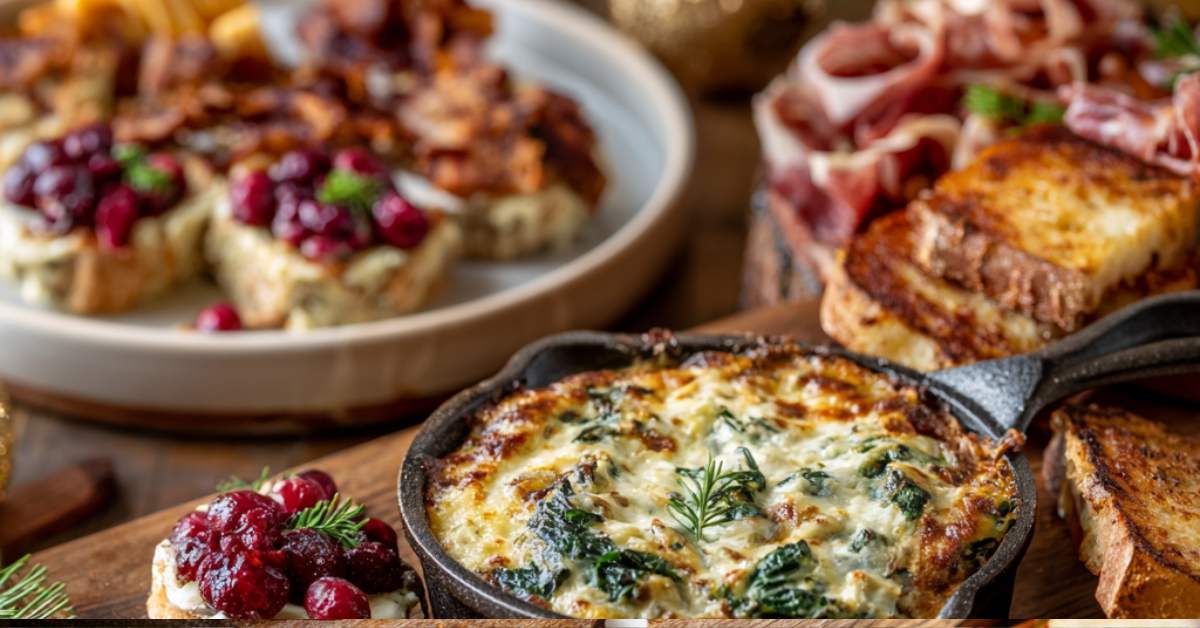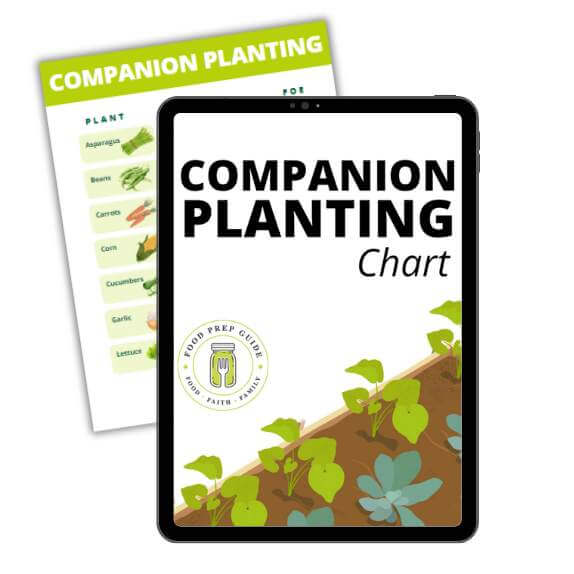One day your basil is beautiful and normal-looking—and the next, it’s covered in white flowers.
Can you still eat the basil? Are the flowers themselves edible?
Let’s chat about it!
Understanding Basil Flowers
Thankfully, basil flowers are edible. That’s right … those tiny white or purple flowers that appear on your basil plant can be consumed just like the leaves.
When your basil starts to flower, you’ll notice small flower heads forming on the plant. The flowering process is completely normal, and it indicates that your plant is mature and ready to produce seeds.
It’s a process known as basil bolting.
However, the appearance of flowers on basil plants can sometimes be seen as a sign to take action, as flowering can make the leaves bitter.
There are many varieties of basil, some producing white flowers while others have purple flowers. Regardless of their color, basil flowers offer a milder flavor compared to the leaves, but with a similar fragrance.
Edibility of Basil Flowers & Their Varieties
Sometimes basil flowers can be slightly bitter, so it’s a good idea to taste test the flowers before adding them to your dishes to ensure they complement the meal.
Though similar, the flowers of different basil varieties can have a unique taste. For example:
- Sweet basil, the most common variety, produces white or pale pink flowers with a mild basil taste. Perfect for garnishing salads, pasta dishes, or even desserts.
- Purple basil has striking, dark purple flowers that can add a pop of color and a mild, sweet flavor to any dish.
- Lemon basil boasts a bright, citrusy aroma and flavor. Its delicate white flowers are lovely atop a refreshing lemonade or infused into a zesty dressing.
While basil flowers are edible, the texture may vary depending on when you harvest them. If you pick them too late in their life cycle, they can become tough and less enjoyable to eat.
Additionally, keep in mind that once your basil plant starts to flower, the production of flavorful leaves may slow down or stop altogether.
If you want to continue enjoying the basil leaves, it’s best to pinch off the flowers as they appear. However, if you’d like to incorporate the flowers into your meals, go ahead and allow your basil plant to bloom.
In fact, I let my basil plants bolt—or flower—on purpose. Here’s why:
Ways to Eat & Enjoy Basil Flowers
Here are a few ideas for using basil flowers in your kitchen:
-
Salad garnish: Sprinkle basil flowers over your salad to add a decorative touch and a mild basil flavor. Be sure to rinse the flowers thoroughly and pat them dry before using them.
-
Infused oil or vinegar: Add basil flowers to a bottle of olive oil or vinegar, making sure they’re fully submerged. Let it sit for a week or two to infuse the oil, then strain out the flowers before using. This infused oil or vinegar can add a subtle basil flavor to your dishes.
-
Herbal tea: Steep basil flowers in hot water for 3-5 minutes to create a soothing herbal tea. You can add other herbs and flavors, such as mint or lemon, to create a more complex blend.
-
Desserts: Basil flowers can add a unique twist to your desserts. Try incorporating them into a simple syrup for drizzling over fruit salads or ice cream, or even fold them into the batter of a cake or muffins for a floral note.
These are just a few ideas on how to incorporate basil flowers into your cooking. Don’t be afraid to get creative and experiment with different dishes to find your favorite ways to use these vibrant and flavorful blooms!
Harvesting and Storing Basil Flowers
When you’re ready to harvest, locate the basil flowers, which typically appear on top of the plant. Try to pick them when they just start to transition from buds, ensuring the freshest and most tender taste.
To harvest, gently pinch the stems of the flowers between your fingers and pull them away from the plant. Be sure to also remove any leaves from the stems, as they can be used in your culinary creations as well.
Once you have collected the flowers, storing them is key to preserving their delicate flavor. Rinse them under cold water and gently pat them dry with a paper towel.
At this point, you have a few options for storing your basil flowers:
- Drying: Spread the flowers out on dehydrator trays, and dry at 95 degrees Fahrenheit until fully dry (times will vary). Store the dried flowers in an airtight container for future use.
- Freezing: Arrange the flowers in a single layer on a baking sheet or plate and freeze them. Once frozen, transfer them into an airtight container or freezer bag for long-term storage.
- Refrigerating: Wrap the flowers in a paper towel and place them in an airtight container or plastic bag. Keep them in the refrigerator for up to a week.
Frequently Asked Questions
Can you cook with basil flowers?
Yes, you can cook with basil flowers. They are edible and can be used in various dishes, just like basil leaves. The flowers can add a bright, slightly floral flavor to salads, soups, and other dishes. Their mild taste works well as a complement to many recipes, so feel free to experiment and add them to your favorite meals.
Is eating basil flowers safe?
Eating basil flowers is indeed safe. These flowers are completely edible and have no known harmful effects when consumed. However, as with any plant, it is essential to ensure they have been grown without the use of harmful pesticides or chemicals. Always wash them thoroughly before consuming.
Do different varieties of basil have different flower edibility?
Different varieties of basil may have slight variations in the taste of their flowers, but all basil flowers are generally considered edible.
How do basil flowers taste compared to the leaves?
Basil flowers have a taste that is similar to the leaves, albeit milder. While the leaves provide a more robust and intense flavor, the flowers offer a slightly floral and subtle taste. Some flowers can be a bit bitter, so it is always a good idea to taste-test them before adding them to your dish.
